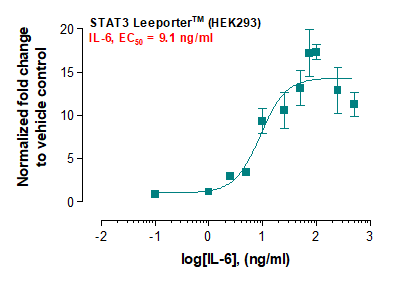Anti-Nuclear Membrane Marker Monoclonal Antibody(Clone: AE-5)
Shipping Info:
For estimated delivery dates, please contact us at [email protected]
| Amount : | 100 µg |
| Isotype : | Mouse IgG1, kappa |
| Content : | 200 µg/ml of Ab Purified from Bioreactor Concentrate by Protein A/G. Prepared in 10mM PBS with 0.05% BSA & 0.05% azide. Also available WITHOUT BSA & azide at 1.0mg/ml. |
| Storage condition : | Antibody with azide - store at 2 to 8°C. Antibody without azide - store at -20 to -80°C. Antibody is stable for 24 months. Non-hazardous. |
| Immunogen Information : | Nuclei of myeloid leukemia biopsy cells |
This monoclonal antibody is part of a new panel of reagents, which recognizes subcellular organelles or compartments of human cells. These markers may be useful in identification of these organelles in cells, tissues, and biochemical preparations. It recognizes an antigen associated with the nuclear membrane expressed in human cells. It can be used to stain the nuclear membrane in cell or tissue preparations and can be used as a marker of the nuclear membrane in subcellular fractions. It produces a ring pattern around the nucleus of cells of normal and malignant cells and may be used to stain the nuclear membrane of cells in fixed or frozen tissue sections. It can be used with paraformaldehyde fixed frozen tissue or cell preparations and formalin fixed, paraffin-embedded tissue sections.The nuclear envelope (also known as the perinuclear envelope, nuclear membrane, nucleolemma or karyotheca) is the double membrane of the nucleus that encloses genetic material in eukaryotic cells. It separates the contents of the nucleus (DNA in particular) from the cytosol (cytoplasm). Numerous nuclear pores are present on the nuclear envelope to facilitate and regulate the exchange of materials (for example, proteins and RNA) between the nucleus and the cytoplasm. The space between the two membranes that make up the nuclear envelope is called the perinuclear space (also called the perinuclear cisterna), and is usually about 20 - 40 nm wide. Each of the two membranes is composed of a lipid bilayer. The outer membrane is continuous with the roµgh endoplasmic reticulum. The inner membrane is erected upon the nuclear lamina, a network of intermediate filaments made of lamin, that plays a role in mitosis and meiosis. The type of lamins present are A, B1, B2, and C. The nuclear envelope may also play a role in the disposition of chromatin inside the nucleus. The lamina acts as a site of attachment for chromosomes. It also acts like a shield for the nucleus. During prophase in mitosis, the chromatids begin condensing to form chromosomes, and the nuclear envelope begins to disintegrate. During metaphase, the nuclear envelope is completely disintegrated, and the chromosomes can be pulled apart as chromatids by the spindle fibers.
Immunofluorescence (1-2ug/ml); Immunocytochemistry (Acetone-fixed cells) (1-2ug/ml for 30 minutes at RT)
For Research Use Only. Not for use in diagnostic/therapeutics procedures.
|
There are currently no product reviews
|






![Anti-CD34 / Mucosialin Monoclonal Antibody (Clone:4H11[APG]) Anti-CD34 / Mucosialin Monoclonal Antibody (Clone:4H11[APG])](https://media.abeomics.com/images/30-1185/1.jpg)















.png)
















